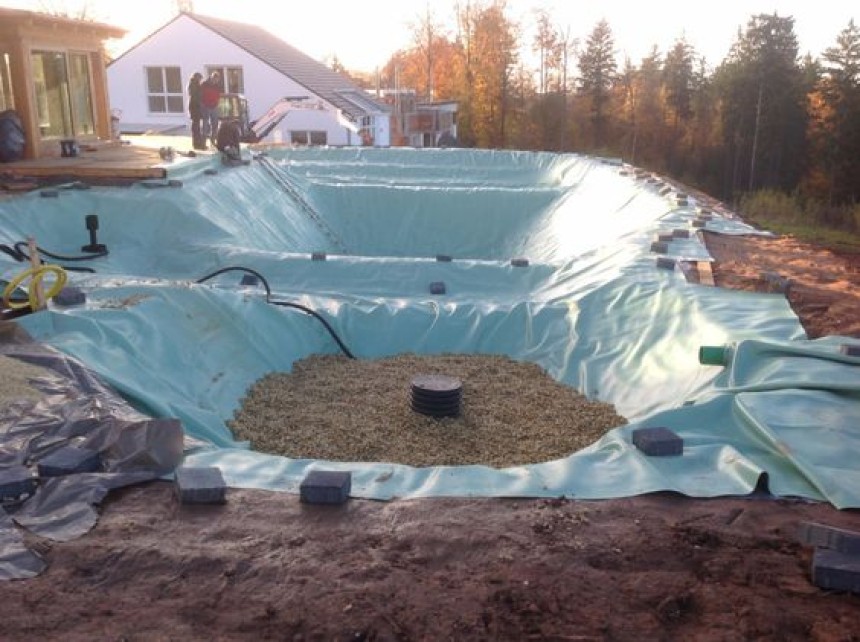
Pond Liner | Buy Pond Lining Sheets at Best Price in India
Creating a pond in your garden or backyard can add beauty, tranquility, and a touch of nature to your environment. However, the key to a successful pond is ensuring that it remains leak-free, which is where pond lining sheets come into play. In this comprehensive guide, we will delve into everything you need to know about pond lining sheets, from types and benefits to installation tips and maintenance. Whether you are a DIY enthusiast or a professional landscaper, this article will provide valuable insights to help you achieve the perfect pond. Understanding Pond Lining Sheets What are Pond Lining Sheets? Pond lining sheets are impermeable materials used to retain water in artificial ponds, preventing water from seeping into the surrounding soil. They are essential for maintaining the water level and ensuring the pond’s longevity. Pond liners are available in various materials, each with its unique properties and advantages. Types of Pond Lining Sheets Polyethylene (PE) Liners High-Density Polyethylene (HDPE): Known for its durability and resistance to UV rays, HDPE liners are popular for their strength and long lifespan. They are suitable for large ponds and commercial applications. Low-Density Polyethylene (LDPE): These liners are more flexible and easier to handle, making them ideal for smaller ponds and intricate designs. Polyvinyl Chloride (PVC) Liners PVC liners are flexible and easy to install, offering good UV resistance and durability. They are a cost-effective option for residential ponds and water gardens. Butyl Rubber Liners Butyl rubber liners are highly flexible and can conform to various pond shapes. They offer excellent UV resistance and are ideal for natural-looking ponds with complex designs. EPDM Rubber Liners Ethylene Propylene Diene Monomer (EPDM) liners are renowned for their flexibility and resistance to extreme temperatures. They are eco-friendly and perfect for ponds with fish and aquatic plants. Benefits of Using Pond Lining Sheets Water Retention Pond liners ensure that the water remains in the pond, preventing leaks and water loss. This is crucial for maintaining the ecological balance and health of the pond. Durability High-quality pond liners are designed to withstand harsh weather conditions, UV radiation, and physical stress, ensuring a long lifespan for your pond. Flexibility Modern pond liners are flexible and can be easily shaped to fit any pond design, allowing for creativity and customization in pond construction. Eco-Friendly Many pond liners are made from eco-friendly materials that are safe for fish, plants, and other aquatic life. This promotes a healthy and sustainable pond ecosystem. Ease of Installation With advancements in materials and technology, pond liners are easier to install than ever before, making them accessible for DIY projects and professional installations alike. Choosing the Right Pond Lining Sheet Factors to Consider Pond Size and Shape The size and shape of your pond will influence the type and thickness of the liner you need. Larger ponds may require thicker, more durable liners. Budget Pond liners come in a range of prices. While it’s essential to stay within budget, investing in a high-quality liner can save money on repairs and replacements in the long run. Environmental Conditions Consider the climate and environmental conditions in your area. Choose a liner that can withstand the local weather, UV exposure, and potential physical damage. Aquatic Life If you plan to have fish and aquatic plants in your pond, opt for liners that are safe and non-toxic. EPDM and butyl rubber liners are excellent choices for eco-friendly ponds. Installation Ease For DIY projects, choose a liner that is easy to handle and install. Flexible liners like PVC and LDPE are ideal for beginners. Installing Pond Lining Sheets Preparation Site Selection and Excavation Choose a suitable location for your pond, considering factors like sunlight, proximity to trees, and drainage. Excavate the pond area according to your design, ensuring smooth and even surfaces to avoid puncturing the liner. Remove Debris Clear the excavation site of rocks, roots, and sharp objects that could damage the liner. A layer of sand or an underlayment can provide additional protection. Liner Installation Positioning the Liner Unroll the liner and position it over the excavation site. Allow the liner to relax and adjust to the pond’s shape. Ensure there is enough excess liner around the edges to anchor it securely. Shaping and Smoothing Carefully shape the liner to fit the contours of the pond, smoothing out wrinkles and folds. Use weights or temporary anchors to hold the liner in place as you work. Securing the Edges Anchor the liner edges with rocks, soil, or landscape staples. Ensure the liner is securely fixed to prevent it from shifting or slipping. Filling the Pond Begin filling the pond with water, adjusting the liner as needed to maintain a smooth and wrinkle-free surface. Monitor the filling process to ensure the liner remains correctly positioned. Final Touches Trimming Excess Liner Once the pond is filled and the liner is securely in place, trim any excess liner, leaving enough to allow for settling and adjustments. Adding Decorations and Aquatic Life Enhance your pond with rocks, plants, and other decorations. Introduce fish and aquatic plants gradually, ensuring the water conditions are suitable. Maintaining Your Pond Lining Sheets Regular Inspections Check for Damage Regularly inspect the liner for signs of wear, punctures, or damage. Address any issues promptly to prevent leaks and further damage. Monitor Water Levels Keep an eye on the water levels to detect any potential leaks. Significant drops in water level may indicate a problem with the liner. Cleaning and Care Remove Debris Regularly remove debris, leaves, and organic matter from the pond to prevent clogging and maintain water quality. Algae Control Use natural or chemical treatments to control algae growth, keeping the pond clean and healthy. Seasonal Maintenance Winterizing the Pond Prepare the pond for winter by removing or protecting sensitive plants and ensuring the liner is in good condition to withstand freezing temperatures. Spring Preparation In spring, clean the pond, check the liner, and make any necessary repairs before reintroducing fish and plants. Types of Underlayment Geotextile Fabric: This non-woven fabric is durable and provides excellent protection against punctures. It is widely used in pond installations. Sand Layer: A layer of sand can act as a cushion, protecting the liner from sharp objects and providing a smooth surface. Old Carpeting: Reusing old carpeting as underlayment is a cost-effective and environmentally friendly option. Installation of Underlayment Spread the underlayment material evenly across the pond excavation area. Ensure it covers all surfaces, including the pond walls and bottom. Overlap the edges of the underlayment to provide seamless protection. Seaming Multiple Liners For larger ponds, it may be necessary to join multiple liners. Proper seaming ensures a watertight seal and prevents leaks. Seaming Methods Double-Sided Tape: Apply double-sided tape along the edges of the liners to be joined. Press the liners together firmly to create a watertight seal. Heat Welding: This method uses heat to fuse the edges of the liners together. It provides a strong, durable seam and is ideal for HDPE and PVC liners. Adhesive: Specialized pond liner adhesive can be used to bond the edges of the liners. Follow the manufacturer’s instructions for application and curing. Seaming Tips Ensure the liner surfaces are clean and dry before seaming. Use a roller to press the seam firmly, ensuring full contact and adhesion. Allow the seam to cure fully before filling the pond with water. Innovative Pond Lining Sheet Technologies Reinforced Pond Liners Reinforced pond liners combine the strength of traditional materials with additional reinforcement layers for enhanced durability. Composite Liners Composite liners consist of a primary liner material (such as HDPE or PVC) with a reinforcing layer of fabric or mesh. This combination provides superior puncture resistance and tensile strength. Textured Liners Textured liners have a rough surface that provides better grip and stability, reducing the risk of slippage during installation and use. They are particularly useful for ponds with steep slopes or complex shapes. Self-Healing Pond Liners Self-healing pond liners are an innovative solution that can automatically repair small punctures and leaks. Material Composition These liners are made from a blend of materials that can flow and fill punctures when exposed to water, effectively sealing small holes and preventing leaks. Benefits Reduced maintenance and repair costs. Enhanced durability and lifespan. Ideal for ponds in areas prone to sharp objects or wildlife. Conclusion Pond lining sheets are an essential component of any pond, ensuring water retention, durability, and flexibility. By choosing the right liner and following proper installation and maintenance practices, you can create a beautiful, leak-free pond that enhances your landscape and provides a tranquil oasis for years to come. Visit: https://www.monoindustries.in/products/pond-lining-film

How to Match Countertops with Your Cabinet Colors
Need help coordinating countertops and cabinets? Our guide offers expert tips on choosing...



